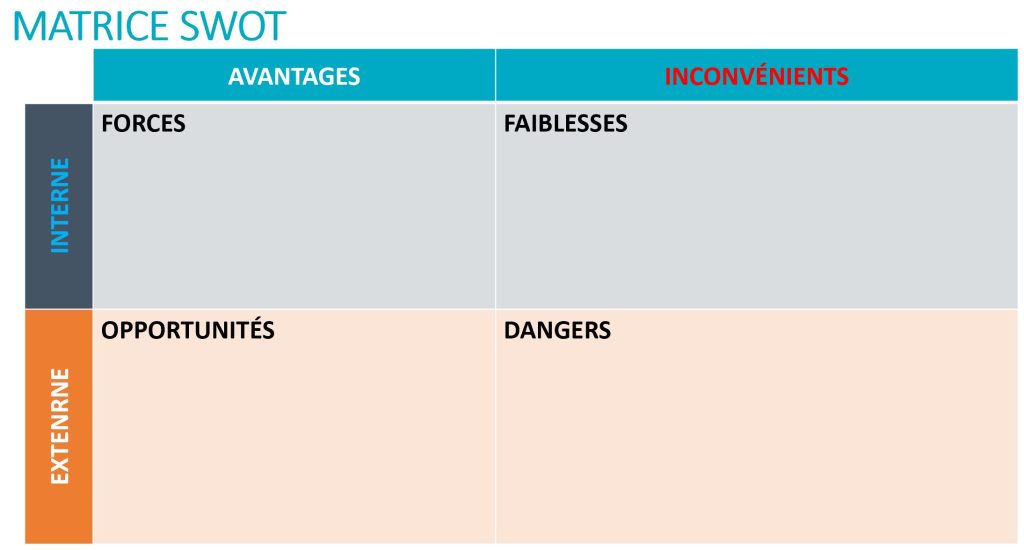CRM enables a small business to optimize the sales equation, and is the key tool for developing its business, seeking out new prospects, retaining existing customers and improving the customer experience.
The sales equation is: number of contacts x sales closing rate x average sales = total sales.
Here’s what you need to do with your CRM to grow your small business.
1. Draw up a strategic plan

- Start by assessing your strengths, weaknesses, market opportunities and threats – in other words, the SWOT matrix of your small business in relation to the market and large competitors.
- Choose your priority markets, the ones you can attack most easily and which will bring you the fastest returns. A small company has few resources and needs to use them in a targeted way.
- Work out your strategy, i.e. how you want to contact your priority customers: telephone prospecting, choice of social networks, type of website, presence or absence of an online store, amount allocated to paid keyword campaigns on search engines.
- Write down the message you want to convey.
2. Find new customers and prospects
- Build your customer list if you already have one
- Build up a list of new prospects to call in order to develop your business and replace the large customers you’ll inevitably lose.
- Import these lists into your CRM, usually in CSV format.
- Create a new prospect record for each call from a new contact.
3. Classify your prospects
- Prioritize your prospects into 1, 2, 3. Prospects 1 are high-potential and easy to attract, while prospects 2 are medium or difficult to turn into customers. You can also identify them as 1, 2 or 3, depending on the stage of the sales process you’ve reached with them. Phase 1 is the first contact with the customer, while phase 3 is the phase before the sale is signed.
- Be strategic: your resources are more limited than those of large companies, so you need to be smarter, choosing the most interesting and easiest targets among your big competitors, who are sometimes asleep and whose salespeople are “functionalized” by large CRMs that favor statistics over efficiency.
4. Classify your customers
- Classify your customers into categories A, B, C, D in your CRM. A-customers are the big ones who support you, B-customers are your competitors’ big customers, C-customers are small but can grow, D-customers are small and will remain so.
- Create customer categories by product type, geographical area or any other segmentation relevant to your business. This will enable you to target your customers according to your marketing campaigns, or call them according to their respective needs.
- Your CRM then allows you to cross-sort between prioritization and category criteria to create targets of reasonable size.
5. Contact your customers and prospects: push strategy
- Prioritize calls and plan time slots, otherwise you’ll never make it.
- Call by opening your CRM on customer records, you should only choose a CRM for small business that promotes efficiency, your salespeople should not spend more time filling in information than selling. Avoid systems where you spend your time clicking sub-menus.
- Prepare quickly before you call, because it’s between calls that time is wasted. As soon as you’ve completed a call, click on the new customer record, call, call, call.
- If you can’t get through to a prospect, don’t hesitate to supplement your call with an e-mail. It’s less effective, but it doesn’t prevent you from calling them back later. In short, you’ve got nothing to lose.
6. Increase your number of distance-selling contacts.
- Digital marketing notwithstanding, don’t be fooled: the best sales in business are face-to-face. On the other hand, you can’t meet everyone, and your objective is to rationalize your resources, which are limited compared with those of large companies.
- Meet your C and D customers and prospects 2 and 3 remotely, thanks to videoconferencing to optimize your time. It’s also easier to get virtual appointments than real ones, so you can increase your prospecting efficiency.
- Meet your A and B customers and your priority 1 prospects face-to-face to maximize your impact. It’s more time-consuming, but it’s still the best way to retain important customers or go after your competitors’ customers.
7. Achieve quality sales
- Every real or virtual encounter must be prepared
- Each visit must have a purpose
- Choose the best sales technique for your business and your personality. The SPIN and SOS techniques are generally the most effective for most types of sales.
- Take notes at each meeting and enter them in your CRM
8. Get references
- You should ask for references from every satisfied customer. If you ask for three and get two, you’ll get a very effective multiplier effect.
- Ask for a reference using a phrase like “I like doing business with people like you, can you give me 3 names of people who might be interested”.
- Make a note in your CRM of the new prospects referred to you and who referred them.
9. Use customer service to sell
- Every customer service call should be an opportunity not only to help the customer, but also to sell to him or her.
- Train your customer service agents in inbound sales techniques
- Your CRM must provide agents with a history of all contacts with your customers
10. Train your employees
- Differentiate yourself from your larger competitors by better training your employees in effective skills.
- Train your employees in the three key areas: technique, sales techniques and CRM. It’s the combination of all three that makes for efficiency.
11. Create a website and write articles
Complement your classic “push” sales system with “pull” web marketing that will bring customers to you. This is even more important if you’re doing B2C, as private individuals are very difficult to reach these days due to new consumer protection laws.
- Create a website that’s easy to navigate, elegant and sales-promoting: it’s your shop window. But there’s no point in being the tallest tree in the forest if it’s lost in the rainforest and no one can see it, so you need to make it visible with a natural referencing strategy called SEO.
- Integrate a blog where you write your articles. These will rank in search engines and attract curious visitors who you’ll convert into customers.
- Create a shopping cart that lets you “sell while you sleep”. It’s every entrepreneur’s ideal!
12. Publish for free on social networks
- Create company pages on your targeted social networks: Facebook for the middle-aged audience, Instagram for young people, Linked for business customers. It’s free, and you can create a community that follows you, advocates your products on social networks, and promotes them. You’ll also be able to regularly inform your followers about your new products and services.
- Subscribe to groups in your field of activity, and publish all your blog posts there to easily expand your reach.
- Write comments on newspaper, magazine or general information pages with links to your site, but make it relevant so you don’t get blocked.
- Use your CRM to help you automate publications. Some do, although that’s not the main objective of this tool, which is called Customer Relationship Management (CRM).
13. Run paid campaigns on social networks
- Complement your free social networking presence with paid campaigns
- Target Facebook for inexpensive campaigns to a large mass of people you can target with their ad manager, Instagram for young people, LinkedIn for fairly expensive campaigns targeted at decision-makers.
14. Organize paid keyword campaigns
- Finish off your web presence with paid keyword campaigns (adwords) on Google, known as pull marketing, i.e. customers calling you to buy your products. The advantage of these campaigns is that the customer will see your products at the very moment they are looking for them, unlike push marketing.
- Also consider using other search engines such as Bing, French search engine Qwant and Yahoo. For sales abroad, such as China, you have Baïdu, but the rules of participation are rather special.
- Analyze the keywords most often used by your customers on your CRM, on your site’s search console, or those suggested by Google’s keyword planner.
- Avoid choosing broadly expressed keywords from the search engines, as they’ll cost you a lot of money and bring you little return, preferring exact keywords or exact expressions.
- Don’t follow all Google’s recommendations: their aim is to get you to spend more.
- Run trial campaigns with limited budgets, and compare the effectiveness of campaigns and keywords.
In conclusion
CRM enables any small business to carry out effective push marketing, and some systems can also help you with your marketing campaigns. If you’ve never had one before, I recommend you try out a free version of CRM before choosing the one that’s right for you.
Prioritize and optimize your budgets – they’re limited!
Jean-Pierre Mercier
